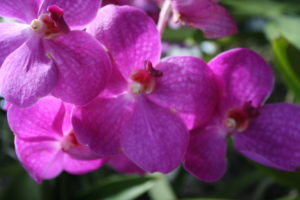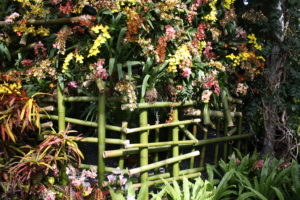By John Ehrling Posted on 9/26/2018
It can be intimidating to wade into the gardening waters for the first time. There are many different practices, norms, and terms that should be thoroughly understood before giving it all a go. Although, once you get the hang of it, there is nothing more rewarding than bringing your own flowers, fruits, vegetables, and trees to life.
Here are the top 10 gardening terms you should take some time reviewing:
- Annual: When annual is attached to any plant title, it refers to the lifespan of the plant. An Annual can be a plant that grows, flowers, and produces seed, all in one season, and does not survive the winter. It lasts for one annual season, requiring you to plant it each year.
- Compost: Compost is the byproduct of plant decomposition and other organic living materials into a soil-like substance that is rich in nutrients and high in organic matter. Compost doubles as fantastic fertilizer, and is capable of improving the performance in almost any soil. It can be made right at home.
- EC: EC is a unit of measurement that reports the saliency of your soil. If you read high EC, it means you have a problem from salt water or snow removal. High EC increases the potential for burned plants, and low EC means you need to add fertilizer to the soil mix. Fertilizer is rich in salts that are good for your plants, as opposed to salts from oceans and snow that are bad for plants.
- Fertilizer: Fertilizer can be made from your own organic materials, or purchased at a store, as a substance that adds nutrients directly to your plants upon application. There are a variety of fertilizers, including controlled release, heavy feeders, light feeders, NPK, trace elements, water soluble fertilizer, and the list goes on.
- Habit: Habit is another term for the structure of the plant, and can be broken down into climbing plants (plants that climb structures); clump forming (plants that form clumps of foliage); mounded (plants with a rounded appearance); spreading (plants that grow low and spread along the ground); trailing (plants that trail along the ground or out of pots, but do not root at the nodes); and upright (a plant that is taller than it is wide with straight edges.
- Micro-Climate: A micro-climate is a spot within the garden that differs from the rest of the garden environment. It could be a wet spot where water collects after rain, or a spot that remains warmer in the winter.
- Mulch: Mulch is often made of bark or compost, and can be organic or inorganic. Mulch helps retain soil moistures, reduces weed production, protects against erosion, cools plants, and adds organic matter to the mixture.

- Perennial: Perennial plants are reoccurring plants that return each spring. Some are hardier than others and last for years, whereas some only bloom for a few seasons before dying out.
- Saturation: Saturation is when a plant is properly watered, ensuring it has come in contact with enough water to flourish. Saturation refers to when the entire root zone of the plant is moist after watering. Beware of over saturation so you don’t drown your plants.
- Watering: Every plant will have a different watering preference. Depending on where you live and the plant you are watering, you can consider dry, dry to normal, normal, normal to wet, and wet classifications based on how much water your plant requires.
Now you’re ready to take on your garden like a gardening enthusiast or an informed pro!
Recent Posts
- Smart Gardening: How Technology Is Revolutionizing Horticulture
- Understanding Gardening Zones: What You Need to Know
- The Right Tools For Your Gardening And Landscaping Needs
- Maximizing Your Harvest: Square Foot Gardening Chart for Beginners
- Holiday Garden Scents: Plants for Natural Aromatherapy in Your Home






